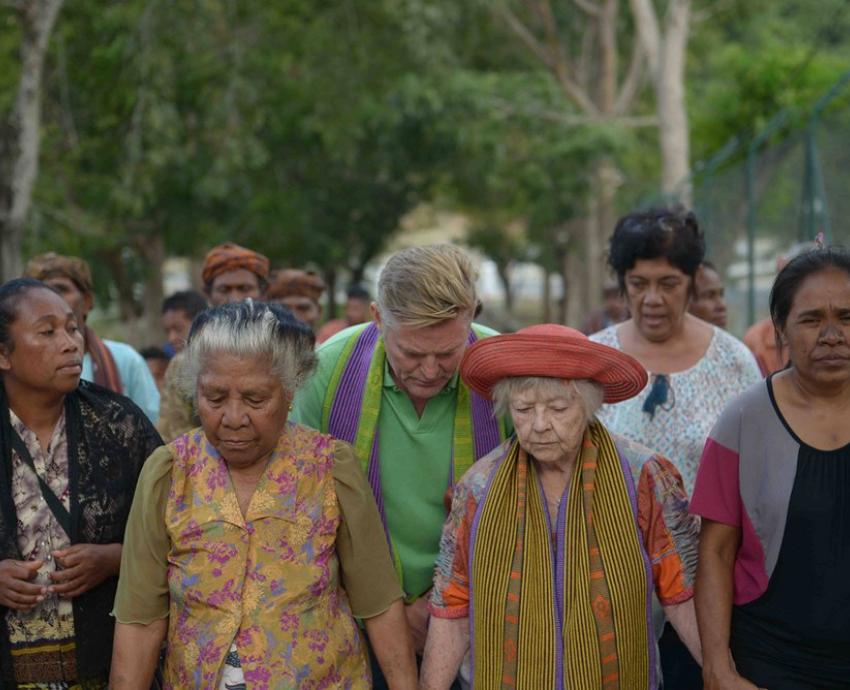
The Circle of Silence
Documentary film
Directed by Luigi Acquisto and Lurdes Pires
Fairtrade Films, 2022
82 mins
The Circle of Silence is a work of witness, remembrance and hope. Directors Luigi Acquisto and Lurdes Pires with the help of the late Shirley Shackleton, turn the latter’s book into a cold case investigation.
The result is a powerful investigation of what really happened to the Balibo Five in 1975.
The Balibo Five were a group of five Australian television journalists, murdered by Indonesian military forces at the beginning of the invasion of Timor-Leste.
Acquisto’s fifth documentary about Timor-Leste is a true homage by a director passionately involved in the country’s struggle for recognition and justice. By following Shackleton’s unstinting pursuit of the death of her journalist husband, we are offered an unsettling account of Canberra’s cosy relationship to the military regime.
The pastiche of smiling Prime Ministers, from Gough Whitlam to John Howard — hugging, dining and cheers-ing Suharto — is enough to make the stomach churn.
This is the man who orchestrated the massacre of more than a million Indonesians, shoring up his 30-year rule through the brutal crushing of the Indonesian Communist Party.
The first four years of Indonesia’s occupation of Timor-Leste, under Suharto, led to the deaths of 200,000 Timorese through army killings and bombings, forced relocations, starvation and disease.
Perhaps most disturbing element of The Circle of Silence is the portrayal of Australia’s incipient role in the invasion.
In the aftermath of the Balibo Five murders, as a self-conscious Indonesia lingered five weeks to gauge international reaction, it was Australia who greenlit Jakarta’s path forward.
Fully aware that these were, in fact, murders, Whitlam chose to support Indonesia’s accounts that these were unfortunate deaths in the crossfire of a legitimate invasion: this paved the way for 24 years of brutal occupation.
While Australia has since recognised these murders, official Indonesian accounts deny them to this day.
Of course, as Acquisto and Pires point out, oil was at the heart of this decision. Whitlam, like a dutiful contortionist, was able to frame Indonesia as the rightful ruler of Timor-Leste by keeping his gaze steadily on oil in the Timor Sea, where confirmation of bountiful deposits had been made in 1974.
Thanks to Canberra’s shonky sketching of maritime boundaries, these deposits secured A$4 billion before they were realigned post Timorese independence.
The directors point out that this makes Timor-Leste Australia’s largest foreign aid donor.
The subsequent question and answer session traced how this film might find oxygen beyond its limited screening tour. How might an audience of committed and passionate viewers be grown when a generally obsequious corporate media is keen to bury any serious questioning of Canberra’s relationship to a well-documented human rights perpetrator?
The directors would like ABC and SBS to screen The Circle of Silence. You can request to host a screening by clicking here.
[This article has been updated.]